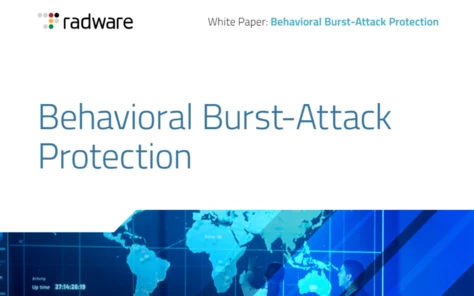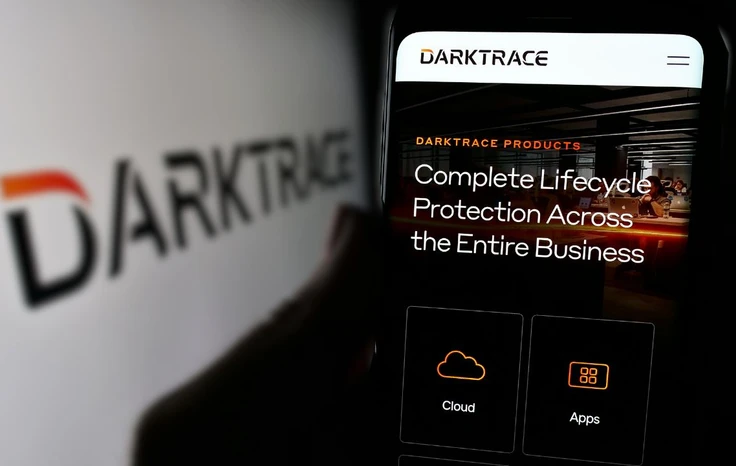What is a Botnet? Definition, Examples, How To Prevent
Top 10 Types of Cyber Attacks and How to Defend Against Them

From everyday devices to critical business infrastructure, the digital world is constantly under siege.
According to the UK's annual Cyber Security Breaches Survey for 2024, half of UK businesses and just under a third of charities report being targeted by a cyber attack in the last 12 months - and that number is expected to rise in the year ahead.
With cyber attacks now more common than ever before, it’s difficult to understand the most common types of cyber attacks so you can prevent them and defend yourself against them when they strike.
What is a Cyber Attack?
A cyber attack is any attempt by a malicious actor to exploit, disrupt, steal data from, or damage a computer system or network.
Cyber attacks can not only feel like a violation of privacy, but they can also have devastating consequences for businesses and individuals including:
- Data Breaches. Sensitive information like financial data, personal records, or intellectual property can be stolen and exposed.
- Financial Losses. Businesses can suffer financial losses from stolen funds, disrupted operations, or the cost of recovery.
- Reputational Damage. Organizations can experience reputational damage if they are victims of a cyber attack.
- Infrastructure Damage. In critical cases, cyber attacks can even damage physical infrastructure, such as power grids or transportation systems.
The reasons behind cyber attacks can vary widely. Most attackers are seeking financial gain, aiming to steal money or personal information that can be sold on the black market. However, others might be trying to steal sensitive data from governments or businesses.
Read: Biggest Cyber Attacks in History
Attacks can also be motivated by activism or ideology, aiming to disrupt operations or spread a message. Whilst there are others who launch cyber attacks for fun or to cause widespread damage.
Preventing Cyber Attacks
Cyber attacks can be prevented by adopting a multi-layered defence strategy that combines strong passwords, software updates, awareness of social engineering tactics, and secure browsing habits.
Secure your network infrastructure with firewalls, intrusion detection systems (IDS), and other security measures to monitor for suspicious activity and block potential attacks. Educate your employees about cybersecurity best practices, including training them to identify phishing attempts, avoid social engineering tactics, and handle sensitive information securely.
By being wary of unsolicited calls, messages, or social media posts and maintaining solid security strategy across your business, you can prevent hackers from targeting your business and stealing sensitive data.

Multi-factor authentication (MFA) is also important, as it adds an extra layer of security for your online accounts. Instead of just relying on a username and password, MFA requires you to provide two or more verification factors to prove you are who you say you are.
If you must use public Wi-Fi, consider using a VPN (Virtual Private Network) or a proxy sever can help add an extra layer of security. Both VPNs and proxies encrypt your internet traffic, making it more difficult for attackers to access.
Types of Cyber Attacks
Defending against cyber attacks can be difficult due to the range of different attack methods using by hackers looking to compromise your systems.
We’re counting down ten of most common types of cyber attacks, exploring what organizations and individuals can do to defend against them.
DNS Tunnelling
DNS tunnelling is a technique cyber attackers use to sneak malicious traffic past a network's defences. It exploits the way the Domain Name System (DNS) is normally used to translate website addresses into numerical IP addresses that computers can understand. DNS requests are a normal part of internet traffic, and they typically fly under the radar of security measures. Attackers take advantage of this by encoding their malicious data within these requests. They set up a malicious domain and a server to handle the encoded data.
A device infected with malware makes DNS requests that contain the attacker's data. These requests are sent to the attacker's server.
DNS Security Extensions (DNSSEC) add a layer of security to DNS by using digital signatures to verify the authenticity of DNS responses. This makes it harder for attackers to spoof legitimate domains. Rate Limiting the number of DNS requests a device can make within a certain timeframe can help prevent attackers from flooding the network with requests containing malicious data. Configure internal devices to use a specific, trusted internal DNS server. This helps control outgoing DNS traffic and makes it easier to monitor for anomalies.
Supply chain attack
A supply chain attack is a cyber attack that targets a weak link in a trusted part of a supply chain to gain access to a larger target further down the line. Software supply chain attacks target software products or services. Attackers might inject malicious code into a software program during development or compromise a software update server to distribute malware. Hardware supply chain attacks involve tampering with physical hardware components during the manufacturing process.
Businesses can defend against supply chain attacks by ensuring all vendors they work with implement robust cybersecurity. Ensure that there is a process in place to verify the integrity of any software updates before installing and be vigilant about continuously monitoring company systems for suspicious activity that might indicate a supply chain attack. Enforce Multifactor Authentication for all access points within your network, especially those related to vendors or suppliers. MFA adds an extra layer of security by requiring a second verification factor beyond just a password to access systems.
IoT Attacks
IoT-based attacks target vulnerabilities in Internet of Things (IoT) devices and systems. These devices, which include anything from smart speakers to medical devices to industrial control systems, are increasingly common and not built with robust security in mind. This creates opportunities for attackers to exploit weaknesses and gain unauthorized access.
Many IoT devices have weak security measures, such as default passwords, unpatched software, and poor encryption. Attackers can exploit these weaknesses to gain control of the devices. Attackers can infect a large number of IoT devices with malware, creating a botnet. This network of compromised devices can then be used to launch large-scale attacks. IoT devices often collect and transmit sensitive data, such as home security footage or medical information. Hackers can steal this data for malicious purposes, such as identity theft or fraud. To defend against IoT-based attacks, look for devices with strong security features, such as encryption and the ability to update firmware regularly. Always change the default password on any new IoT device you purchase. Make sure to install software updates for your IoT devices as soon as they become available.
Man In The Middle Attack
A man-in-the-middle (MITM) attack is a type of cyber attack where the attacker secretly inserts themselves into the communication between two parties who believe they are talking directly to each other. The attacker can eavesdrop on your communication, stealing sensitive information like login credentials or credit card details.
To prevent man-in-the-middle attacks use secure websites that have HTTPS encryption. This will be shown in your browser as a padlock symbol in the address bar and "https" instead of "http" at the beginning of the URL. Avoid using public Wi-Fi networks for sensitive activities like online banking or entering passwords. If you must use public Wi-Fi, consider using a Virtual Private Network (VPN) to encrypt your traffic. Make sure your operating system, web browser, and other software are always up to date with the latest security patches.
Code Injection Attacks
Code injection attacks are common types of cyber attacks that trick applications into running malicious code that the attacker provides, instead of the intended code. This can have serious consequences, such as stealing sensitive data, taking control of the application, or even launching further attacks on other systems.
Prevent code injection attacks by validating user input to ensure it only contains expected characters and doesn't include any malicious code. You can also use Prepared Statements which are pre-compiled SQL statements that help prevent SQL injection vulnerabilities. Ensure you keep your web applications and server software up to date with the latest security patches.
Insider Threat Attack
An insider threat attack is a security breach that comes from within an organization by someone with authorized access. This access could be current or former employees, contractors, business partners, or even temporary workers. Insiders can steal sensitive data, such as customer information, financial records, or intellectual property, disrupt critical systems or processes, or deliberately sabotage the organization's infrastructure.
To defend against insider threat implement strong access controls to limit access to sensitive data and systems where possible. Continuously monitor user activity and network traffic for suspicious behaviour. Educate employees about the dangers of insider threats and how to protect sensitive information and conduct thorough background checks on potential employees.
Spoofing
Spoofing is a type of cyber attack where the cybercriminal disguises themself as a trusted source to gain access to a computer system or network. They might manipulate email addresses, phone numbers, or website URLs to deceive the victim
Prevent spoofing attacks by being cautious with unsolicited messages. Check link urls carefully, looking for typos or inconsistencies. A secure website address should start with "https" and have a lock symbol in the address bar. Take your time with any interaction you’re not sure about and look out for social engineering techniques.
DDoS Attack
A DDoS (Distributed Denial-of-Service) is a type of cyber attack where the attack tries to overwhelm a website or online service with a flood of internet traffic, making it unavailable to legitimate users. Attackers use a network of compromised computers, often called a botnet, to launch the attack. These bots can be infected devices like home computers, internet-connected appliances, or even servers.
DDoS protection services act as a shield for your online infrastructure, safeguarding websites and critical applications. These services work by filtering out malicious traffic before it reaches your servers, ensuring legitimate users can continue accessing your resources. Continuously monitoring network traffic for suspicious patterns can also help identify and respond to DDoS attacks quickly.
Malware
A malware attack is a type of cyber attack when malicious software (malware) infiltrates a computer system or network. This malware can then disrupt operations and steal and still a company's or an individual's data. Common types of malware include viruses, worms, trojans, ransomware and spyware.
The best way to defend against a malware attack is to install antivirus software and ensure its software is regularly updated. Ensure you are also cautious with unknown attachments or links, use strong passwords and are wary of public Wi-Fi.
Phishing
A phishing attack is an attempt by an attacker to steal sensitive information, such as usernames, passwords, credit card details, or other personal data. This has become the most common type of cyber attack, with an estimated 84% of organizations falling victim to them in the last 12 months according to the UK's annual Cyber Breaches survey. Phishing attacks are a form of social engineering, where attackers exploit human psychology to trick victims into revealing confidential information. Phishing attacks may use spoofed websites and email addresses to seem more convincing, and many threat actors have also turned to large language models (LLMs) and altered, dark-LLMs like FraudGPT to make their attacks more convincing.
Avoid phishing attacks by not clicking on links or attachments in emails or text messages from unknown senders. Be wary of even seemingly familiar senders if the message appears suspicious. Check for the padlock symbol in the address bar and ensure the website URL starts with "https" when entering sensitive information. These indicate a secure connection. Make sure your operating system, web browser, and other software are always up to date with the latest security patches. This helps to close vulnerabilities that attackers might exploit.
























